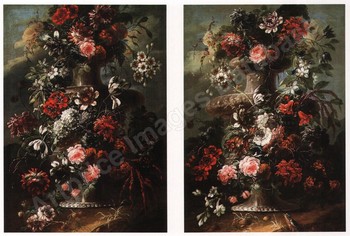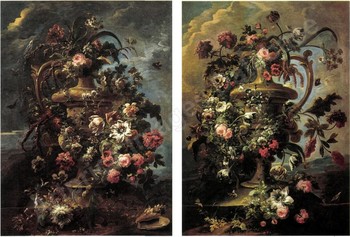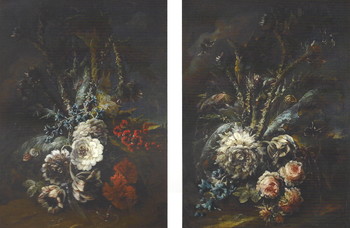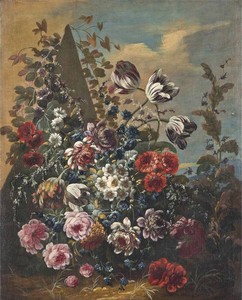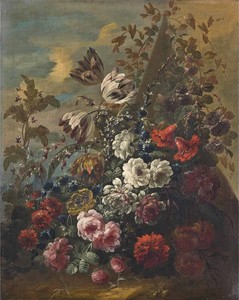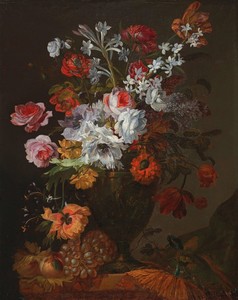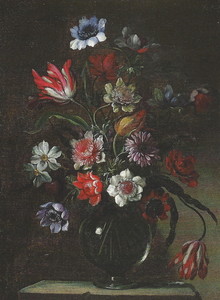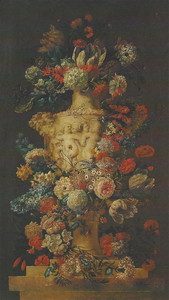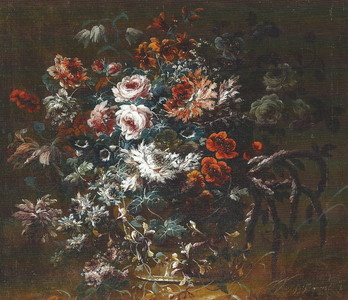Jean Batiste Morel
A pair of still lifes with tulips, roses, poppies, nasturtians and pheasant eye in a stone urn
Oil on canvas : 56,8 X 41,3 cm/each
Unsigned
Sold at Sotheby’s New York, 20/05/93
For 28.750 $/the pair = 24.105 €/the pair
This is a comparative item
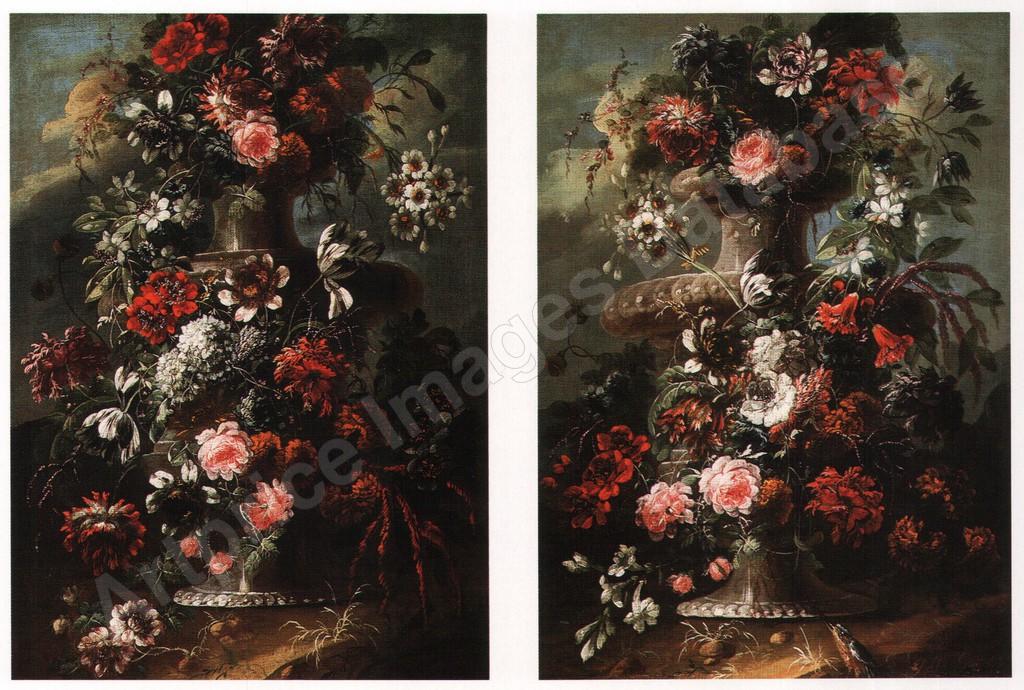
Painting for Sale
Comparative paintings
Click photos for more details

